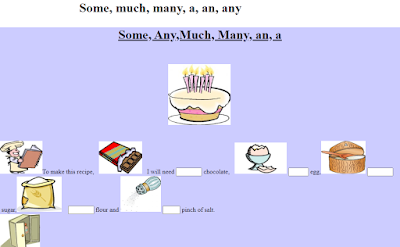Reading Rebecca Usherwood’s article about Flipped Classroom
makes us think about the new school year in a month or so.
“………It is common practice in
classrooms for teachers to teach a concept at school, then set homework for
children to do independently. But, in flipped classrooms, this is the opposite
- it is, quite literally, flipped.
The concept is taught at home
(often through videos that teachers have either found on the web or filmed
themselves) and the work relating to the concept is done at school. The idea is
that the children can take the time at home to learn the facts and the
essentials about a subject or strategy, then come to school bursting with
questions and background knowledge which the teacher can guide them through
whilst deepening their learning.
It throws away the more
traditional view of children consolidating their learning at home or delving
deeper by making a craft project to explain their learning. The classroom
becomes the place to work through problems and do more collaborative learning,
rather than spending time listening to a teacher explain a concept, delivered
in a range of ways, interrupted with other students’ questions. The flipped
classroom is one aspect of the ‘flipped learning’ approach - more information
on flipped learning can be found in this useful document…………
Coronavirus has changed the way
that children have been learning. Many children have been learning solely at
home, while others have experienced a mixture of school and home. Either way,
school life is not as it was. Huge efforts and changes have been made in
schools to prepare videos and resources for children to learn with at
home.
As a result of the Coronavirus pandemic and the closure of many schools around the globe, we have already been using a lot of the flipped classroom techniques, as learning has been taking place remotely..….We have found a new way to educate, which doesn’t rely on students attending a school and getting their source of education from one teacher. Now is the perfect time to harness what we have learnt from the remote learning experience and build this into our learning experience for students, rather than ignoring all the good work teachers, students and families have been putting in to support this approach…”
Our experience during the lockdown
We used the Flipped Classroom as a way of organising
and delivering the learning material in synchronous and asynchronous learning during
the Coronavirus lockdown.
We used various Web2.0 tools for different classes and projects.
Pros
- spent working on deeper learning.
- More
parental involvement before, during and after the lesson.
- Students
have already thought about the subject, so will arrive in class with any
misconceptions and questions that can be dealt with quickly.
- Lots
of the learning was done online.
- Children
could ‘practise’ and deepen learning with a teacher in the online classroom.
- Children
got access to their teacher twice – at home via the platform/digital class
and synchronously via Webex.
- Children
could take the lessons at their own pace. They could pause and watch the
videos, websites and resources at home, as many times as they wanted, without
needing extra time in class. This is particularly useful for students who
have slower learning rhythm.
- It
allowed students of different learning abilities and styles to excel either
verbally or in writing coping with different texts.
- Helped
students to understand that teachers are not the only source of
information.
Cons
- Relies
on parental help and students being willing to learn. Both parents and
students thought that joining the synchronous or asynchronous meeting was
optional rather than obligatory.
- Relies
on technology/internet accessibility and connection.
- Not
all children learn best through visual learning (different learning
styles).
- Flipped
homework is still homework!
- It
needs to be organised differently and well in advance.
- Relies
on students having a good working space at home, without distractions.
- Students
need to do the work to understand what will be talked about in the
synchronous meeting.
- Parents
and children need educating about what it is and how it works.























